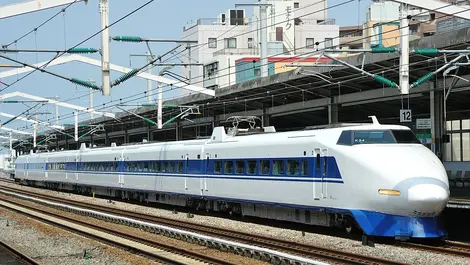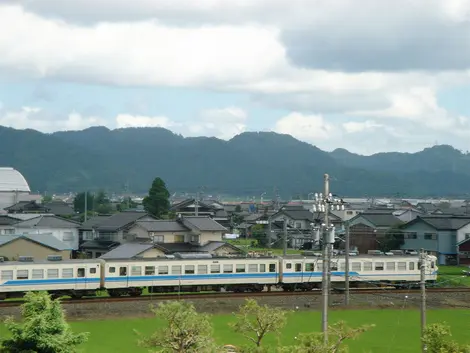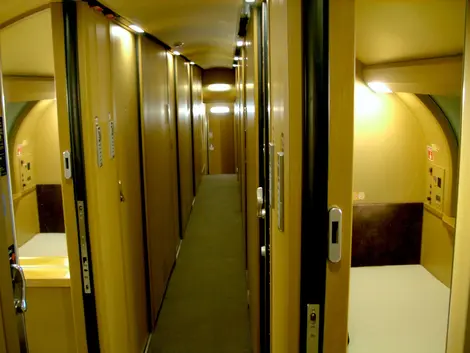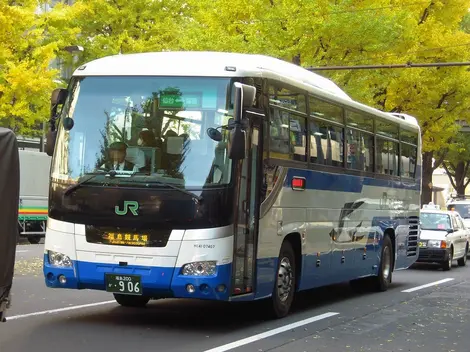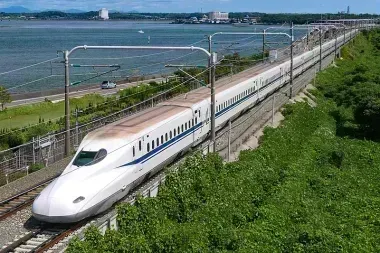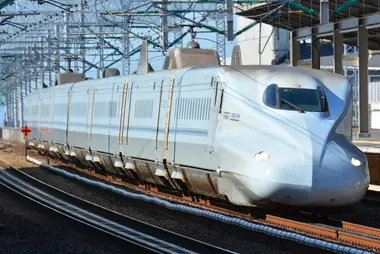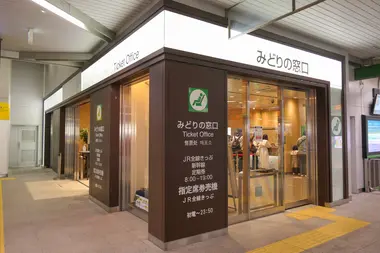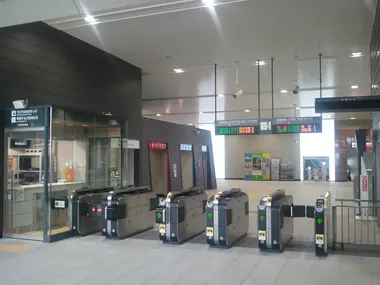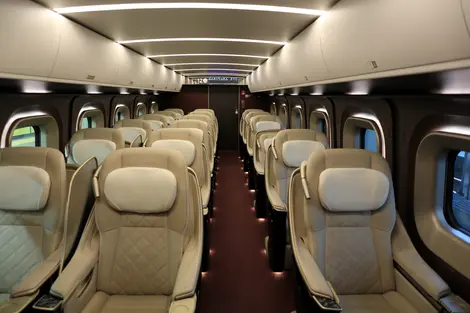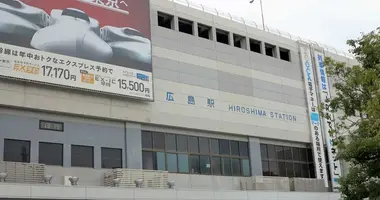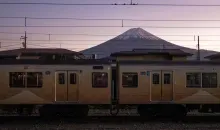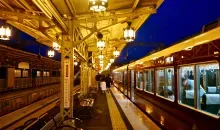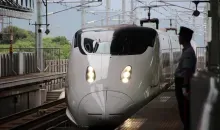The Japan Rail Pass: Everything you need to know!
The Japan Rail Pass (often shortened to JR Pass) is a specialized ticket issued by Japan Rail Group, the largest operator of the world-renowned Japanese public transportation. With this pass, travelers have unlimited access to much of the Japan Rail transportation network for a set amount of time, for one fixed price.
Due to its single price, ease of use, wide-range of coverage and efficiency, the Japan Rail Pass is a great choice for visitors to the country.
The pass itself consists of a single ticket that has elements such as travelers’ information, validity period of the JR Pass, price, a QR code, and other pieces of relevant information written on it.
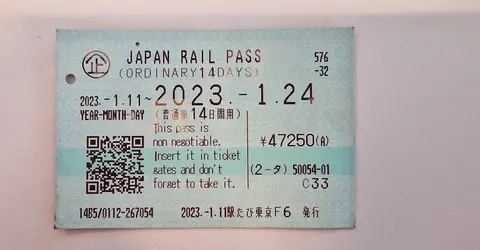
Japan Rail Pass ticket
@Wikimedia
The Japan Rail Pass is available for purchase through third party agencies, such as Japan Experience, to order a trade-in voucher. Otherwise, the pass can be purchased directly from Japan Rail (JR), within Japan.
The Japan Rail Pass currently lists for these prices in Japanese yen:
| Pass Type | 7-Day Price | 14-Day Price | 21-Day Price |
|---|---|---|---|
| (Adult) Ordinary National | 50,000 yen | 80,000 yen | 100,000 yen |
| (Adult) Green National | 70,000 yen | 110,000 yen | 140,000 yen |
| (Children) Ordinary National | 25,000 yen | 40,000 yen | 50,000 yen |
| (Children) Green National | 35,000 yen | 55,000 yen | 70,000 yen |
Where can I travel with the Japan Rail Pass?
The Japan Rail Pass allows access to a vast majority of the JR Group’s public train network which spans nearly the entirety of Japan aside from the island of Okinawa. That means, theoretically, traversing the entirety of Japan can be done via the Japan Rail train system and with the Japan Rail Pass.
These lines are often designated with a “JR” suffix. Well known examples of these are the JR Yamanote Line, JR Chuo Line, and JR Saikyo Line in Tokyo, the JR Osaka Kanjo Line (Loop Line), JR Tozai Line, and JR Yamatoji Line in Osaka, and the JR Sasaguri Line, JR Nippo Line, and JR Kagoshima Line in Fukuoka.
Additionally, JR stations will often be marked with the JR logo, as seen in the pictures below:
All Shinkansen (high-speed bullet trains) that run through Japan are operated by the JR Group. This includes the express Nozomi & Mizuho Shinkansen Bullet Trains, though riding these will entail an additional fee depending on the departing station and destination.
The high-speed Shinkansen bullet train is one of the most standard means of cross-country travel, though costs for these trains are relatively high. It is the included access to these express train lines provided by the Japan Rail Pass that makes it such an attractive option to many.
Extending past local and bullet train options, the Tokyo Monorail and overnight sleeper trains like the Sunrise Seto are also covered.
In addition to the trains available on the JR Pass, there are a number of other transportation options that can be ridden. Local buses in select cities are included. Here is a list of rideable bus networks:
JR Hokkaido Bus | JR Tohoku Bus | JR Bus Kanto | JR Tokai Bus |
West Japan JR Bus | Chugoku JR Bus | JR Shikoku Bus | JR Kyushu Bus
Also included with the pass is the ferry out to Itsukushima Island in Hiroshima, showing that the pass isn’t limited solely to railway options as the name may imply.
JR Group is divided into six different branches:
- JR East
- JR Central
- JR West
- JR Hokkaido
- JR Shikoku
- JR Kyushu
JR East covers much of the northern part of Honshu, incorporating the Tohoku Region, JR Central operates the middle part of Honshu, incorporating parts of Kanto, Hokuriku, and Kansai. JR West, manages the southern part of Honshu that includes parts of Kansai, and areas like Hiroshima and Chugoku.
Each of these individual branches offer area-specific regional passes, but the National Japan Rail Pass provides comprehensive coverage for each of these regions.
What is not accessible with the Japan Rail Pass?
In regard to other trains, it should be noted that all subway lines are not available with the JR Pass. The difference may not be immediately apparent, but the “JR” designation will be the main indicator for Japan Rail operated lines that are accessible with the pass.
Examples of these private lines that are not accessible are the Odakyu Line, Tozai Line, and Keio line in Tokyo, Midosuji Line, Tanimachi Line, and Yotsubashi Line in Osaka, and the Kuko Line, Hakozaki Line, Nanakuma Line in Fukuoka.
For these, IC cards (prepaid cards) like the Suica Card can be charged with yen and used on these train lines, along with being a means of payment at many places.
*NOTE: The Suica and PASMO IC Cards are currently not being sold due to chip supply shortages*
There are also a number of specialized day passes in major cities such as Tokyo, Osaka, and Kyoto that can be used for unlimited access to their public transport facilities.
How to Exchange and Activate the Japan Rail Pass
Upon placing an order for a Japan Rail Pass, there is some traveler information required to register. This includes traveler name as written in their passport, nationality, arrival date, duration of use, and intended date of activation.
If you order a Japan Rail Pass through Japan Experience, what will be sent by mail is not the JR Pass itself, but instead, an exchange voucher.
This voucher will be traded in for a usable JR Pass at a registered exchange office in Japan, often dubbed “midori no madoguchi,” upon arriving in the country. Vouchers must be exchanged for JR Passes within 3 months of purchase. There are many of these exchange offices throughout the entirety of Japan.
The pass is available in iterations of 7 days, 14 days, and 21 days. Choosing an activation date for the JR Pass is important, as it is when the period of valid use begins to countdown. The activation date is decided at the same time as exchanging the voucher at the JR office (though the exchange date and activation date do not need to be the same).
The day of activation counts as day one regardless of the time, and the pass is usable up until the end of the last day. It is due to this that it’s suggested to consider what activation date is best with a given itinerary. If a traveler has a 7 day JR Pass but the first leg of their trip has no Shinkansen rides scheduled, it may be best to choose a later activation date.
At the same time, it should be noted that a number of transportation options that traverse between major airports and cities in Japan are covered with the pass. For those who will be doing extensive Shinkansen travel from the get-go, exchanging and activating the pass immediately may be beneficial, as it can often also be used immediately to leave the airport.
How to Reserve Seats on Japanese trains?
With the JR Pass, seat reservations for standard car seats are completely free (as opposed to further charges with an individual ticket). These reservations can be made at either the JR Offices or at the train ticket kiosks, both found within stations.
Additionally, travelers with oversized luggage (defined by being between 160 cm and 250 cm in total dimensions of LxWxH), will need to reserve space for this oversized baggage that will be located in the back or front of the train car.
For those with reserved seats, the car number and seat number will be printed on the separate boarding ticket that will be received once a seat reservation is made. For Shinkansen platforms, individual car number boarding spots will be marked, allowing passengers to line up and prepare to board before the train even arrives.
How to Ride the Train with the Japan Rail Pass?
Using the JR Pass at stations to actually board and ride trains in Japan is a rather simple process. Nowadays, the pass comes in the form of a paper card. Simply insert the pass into the slot at the ticket gate (the same slot that is used for individual train tickets), and immediately recollect it once it is redistributed right before passing through the gate completely.
This same process will be repeated once departing from the station of your destination. Normally, single use tickets are not redistributed upon leaving the station, but since the JR Pass is a reusable item, it will be.
For those who have opted to reserve seats on the Shinkansen, a second ticket will be received from the JR Office for such. When entering the gates, both tickets will be inserted and recollected. However, when leaving, only the JR Pass ticket needs to be inserted.
This is the current process that differs from the pass’ former way of usage, where it was physically presented to station attendants who would let passengers in and out of ticket gates.
Navigating the Station
Information for train departures, including times, train name, seat-reservation status, and boarding platform, will be on display on electronic display boards inside the station by the gates. Signs will be posted to direct passengers to different platforms, but in case of any confusion, station staff will be there to assist.
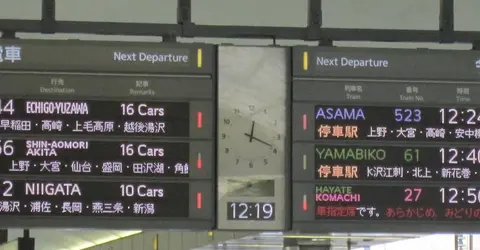
Train timetable at the train station
@Wikimedia
Traveling by train in Japan
Shinkansen
The Shinkansen, being a means of high-speed, cross-country travel, is inherently more luxurious and comfortable compared to other rail cars. Standard car seats are able to be reclined, have front trays for food and drinks, coat hooks for outerwear and belongings, large windows that can be opened and shut, and even power outlets for charging electronic devices. Standard Cars are often separated into reserved and non-reserved cars, the latter being able to be freely ridden without prior arrangements for JR Pass users.
Most Shinkansen trains also offer what is called “Green Class Cars,” which can be seen as more luxurious seating that have all the amenities of the standard cars but with additional leg room and further reclining chairs. Green Class Car seating requires a reservation and entails an additional fee for holders of the standard National Japan Rail Pass. There also exists the Green Class JR Pass that allows for Green Class Car seating without additional fees, but riding said cars still requires a reservation ahead of time.
One more step up from the Green Class is the Gran Class. This is the most luxurious option on the Shinkansen with an upscale interior, even more leg room, and even further reclining seats. While there is no dedicated Japan Rail Pass specifically for the Gran Class Car, both types of National JR Pass can upgrade to Gran Class Seats for an additional fee depending on Shinkansen line and destination.
Local Train
Local JR trains that operate in individual cities and towns cover a, generally, smaller region and at slower speeds, so they are characterized by more standard amenities, though in general, still rather comfortable and accommodating.
Local trains often have inward-facing seating, including priority seating for passengers who are older, have disabilities, have children or are pregnant.
During busy commuting times, it is standard for passengers to stand, and at times, trains and stations can be very crowded, especially in major cities. It’s best to keep in mind the rush hour period to ensure smooth travels.
Useful tips for the Japan Rail Pass
Use Jorudan
The Jorudan application is an essential tool for those traveling to Japan, as it helps travelers keep track of up-to-date train schedules and time tables. Historically, Hyperdia was the standard application of choice for most visitors to the country, but as of 2022, it has ceased operation.
Take advantage of all the transit options
Though it may be called the “Japan Rail Pass,” as previously mentioned, it gives access to much more than just railway options. For many destinations, the bus network may be the best way to get somewhere, and of course, the ferry to Itskushima in Hiroshima allows travelers to see one of the most recognizable attractions in the country: the floating torii gate of Itsukushima Shrine.
Know when to upgrade
The option to spring for the Green Car or Gran Class Car is one that may be worthwhile in some scenarios for travelers. If a pass user already has made their money’s worth with their travels and wishes to experience a more luxurious riding experience, it may be fun. Simultaneously, taking advantage of this option may come out of necessity if the standard car seats are all filled - such as is the case during high tourism seasons - or if they wish to maximize comfort and amenities for a longer journey, paying a bit more may be worth it.
Take advantage of our support options!
With our JRP Care service, travelers can fully take advantage of all the great features the pass offers while being able to receive help or advice in regards to your JR Pass through our local hotline. Travel often entails sudden changes so any added security from experts on Japan travel will come in handy and provide some peace of mind, as well as assuring a full refund in the case that a JR Pass order must be canceled.
Make a difference with the JRP Carbon-Free service!
Travel, while providing infinite opportunities for great memories and cultural exchange, has an undoubtable effect on the environment. With our JRP Carbon-Free initiative, we look to offset the negative effects of rail travel by implementing a number of eco-friendly practices, such as tree-planting in Nagano and coral-preservation in Okinawa. The additional funds received from adding the JRP Carbon-Free service to your Japan Rail Pass order will contribute to these efforts. Explore Japan while helping us maintain its beauty!
Bonus tip: Get a JRP Wallet ticket holder, so you can travel with your JR Pass safe and secured in your pocket, in a nice little protective wallet that'll be a nice souvenir once you're back home!












